 A wind turbine dominates the Dundalk Institute of Technology (Steven R. Knowlton)
A wind turbine dominates the Dundalk Institute of Technology (Steven R. Knowlton)April 9th. (NY Times) - WHEN the fearsome Cuchulainn was transformed by the rage of battle into a Celtic Incredible Hulk, according to Irish mythology, the warrior’s intensity melted snow for 30 feet around him. That was an impressive generation of alternative energy from this Achilles-like hero so closely associated with Dundalk, but this town on Ireland’s east coast is turning to less ephemeral kinds of power as it tests technologies to reduce the country’s thirst for fossil fuels. The goal is innovation on a local scale, developing clean energy sources and reducing energy demand in a 1.5-square-mile site called a Sustainable Energy Zone. The project is part of a European Union program to encourage pilot projects that can be scaled up to regional or national levels. Dundalk is working with two other towns, in Austria and Switzerland, on a total budget of about $40 million, said Aideen O’Hora, the project manager for Sustainable Energy Ireland, the government agency in charge. But the biggest changes are taking place in Dundalk.
The zone has a bit of everything — an industrial park, a college campus, a high school, a hospital, a hotel, other businesses and two housing developments — in a town of about 30,000 people. The five-year project will be a year old in June, but other initiatives got a head start, and the town of Dundalk is already seeking money for an energy-conscious expansion that could double its size. Some of the current projects are literally high profile. The first thing a visitor spots is a wind turbine 200 feet high that has dominated the campus of the Dundalk Institute of Technology since 2005. It is the inspiration for an even bigger one that will provide power to Xerox in the industrial park. Self-powered streetlights being tested on the campus and in the industrial park also draw curious looks because their small wind turbines and solar panels make them appear as if they are ready for liftoff.
But most of the work is less obvious or is in the planning stage. For example, a wood-fueled system with a gas boiler backup will deliver heat and hot water to many buildings in the zone through underground pipes. And inside the H.J.Heinz plant, which produces frozen dinners for dieters, clever engineering has put the machinery on an energy diet. Energy conservation in the zone means improving the insulation for both new and existing homes. And Sustainable Energy Ireland says that by 2010, renewable energy will account for at least 20 percent of the heat in the zone and at least 20 percent of the electricity used by businesses. That timetable looks overly modest to Lawrence D. Staudt, an American engineer who moved to Ireland in 1985 while working for a Vermont-based wind-power company that went out of business six months later. Mr. Staudt, now the director of the Center for Renewable Energy at the Dundalk Institute of Technology, says Ireland is ideally suited for wind power because of its perch in the northern Atlantic, and he is eager to see it move ahead. The limiting factor is Ireland’s electrical grid, which is being updated. The winds (and wave-power energy potential) are strongest on the western coast, but the country needs some “big pipes” to carry the power to more populous areas, Mr. Staudt explained. “Ireland will become an exporter of green electrons,” he predicted.
The turbine is the largest commercial wind turbine on a college campus, Mr. Staudt said, and it has cut the college’s electricity costs in half. It will pay for itself — the cost was about $2 million — in seven and a half years, he added. The campus center is also studying the self-powered streetlights that are being imported by Horseware, a horse-blanket company in the industrial park. Ciaran Herr, Horseware’s purchasing manager, said he brought some of the lights to the Dundalk plant after seeing them in China. But they have their limits. “The County Council said they were interested in buying them, but I must guarantee 100 percent light at night,” Mr. Herr said. “I can’t do that.” If there were four or five short winter days without wind, the solar energy wouldn’t be enough, and the two small batteries each streetlight has would run dry. So the lights will be best used in places like parks and remote areas, Mr. Herr said, and a power backup might be added. The plan for the zone calls for streetlights like these to be installed in Dundalk’s industrial park.
At Heinz, energy innovation started with recycling and conservation. Then the engineering staff looked for savings in the refrigeration, compressed air and boiler systems. A big chunk of Heinz’s electricity bill comes from freezing the dinners, said Shane Kearney, the chief engineer. The system uses compressed ammonia. “The greater the pressure, the harder it is to pump,” Mr. Kearney said. “We took the pressure down to where the motors didn’t have to work so hard. That took 30 percent off the freezing bill in the first year.” Then utilities workers took a critical look at the compressed-air system used to drive machinery and found that fixing leaks quickly made a big difference in costs. “When we plugged the leaks,” Mr. Kearney said, “we could drop the third compressor. Turned out it was there to keep the leaks happy.” And the second compressor, said Micheal McNally, the utilities supervisor, now has to work only part of the time. Heinz’s boiler-efficiency project stepped onto disputed ground by installing a C.V.E. (calorific value enhancement) system, which produces a pulsed magnetic field around the pipe carrying gas fuel. How this might make the fuel burn more efficiently has not been proved, and many experts contend that it doesn’t work at all. But Mr. McNally said the plant was reaping fuel savings of 4 to 5 percent.
There is more work to do. For example, the heat drawn from the refrigeration apparatus could be used to heat water for cleaning, but the generation of the heat and the cleaning of the plant take place at different times of the day, and the storage of warm water could lead to bacterial growth — unacceptable in a food plant. Still, Mr. McNally thinks a way may be found to do it safely. Heinz is in the Finnabair Industrial Park, which is named after a daughter of Cuchulainn’s rival, Queen Medb. It is an appropriate name — one tale says Finnabair died of shame because of all the men’s lives wasted for her sake. For the engineers, technicians and managers in the industrial park and the Sustainable Energy Zone that includes it, waste is still the problem.
By KAREN FREEMAN for The New York Times
+++++++++++++++++++++++++++++++++++++++++++++++++++
Disclaimer
No responsibility or liability shall attach itself to either myself or to the blogspot ‘Mozlink’ for any or all of the articles/images placed here. The placing of an article does not necessarily imply that I agree or accept the contents of the article as being necessarily factual in theology, dogma or otherwise.
Mozlink



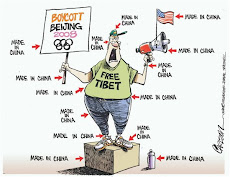













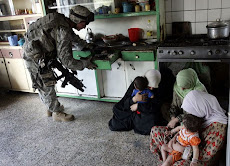







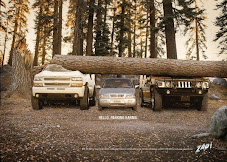

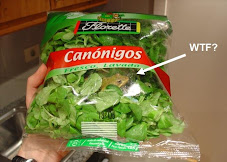

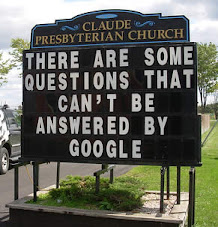























No comments:
Post a Comment